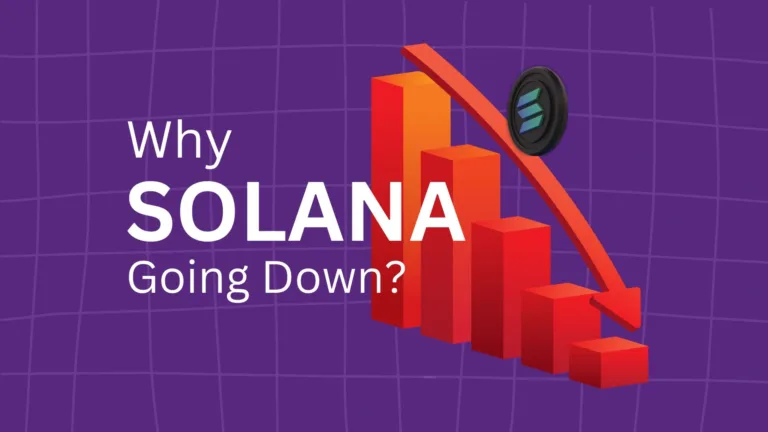STETH in 2050: Is It Still Worth Holding?
In the ever-evolving landscape of cryptocurrency, Staked Ether (STETH) emerges as a pivotal innovation, solving one of the most fundamental issues of Ethereum staking: the loss of liquidity.
Introduced in 2020 by Lido Finance, STETH reshaped the concept of staking through liquid staking—a mechanism that allows users to earn staking rewards from their ETH without locking away their assets for an extended period.
STETH grants investors and DeFi participants the flexibility to manage, trade, and utilize their staked ETH across various protocols, all while continuing to accrue rewards.
Principal Conclusions
Hide-
STETH is a liquid staking token representing ETH staked via Lido, designed to maintain liquidity while earning Proof-of-Stake rewards.
-
Its value is heavily influenced by ETH price trends, staking yields, DeFi markets, and global regulatory developments.
-
Long-term forecasts model three scenarios by 2050: Optimistic ($148,500), Moderate ($74,250), and Pessimistic ($29,400).
-
Risks include regulatory shifts, competing staking solutions, Ethereum upgrade risks, macroeconomic changes, and future tech disruptions.
This article offers a comprehensive look at how STETH works, forecasts its valuation up to the year 2050, and breaks down the risks and dynamics that will shape its long-term trajectory.
What Is STETH and Why Does It Matter to Ethereum?
STETH is an ERC-20 token issued by Lido Finance, designed to represent ETH that users have staked through the Lido protocol—a staking-as-a-service platform that distributes staked ETH to a decentralized network of Ethereum validators.
In exchange, users receive STETH in equal value, which can be freely traded or utilized in various DeFi platforms.
What makes STETH stand out is its ability to “revive” staked ETH. In Ethereum’s Proof-of-Stake system, ETH deposited into the Beacon Chain is typically locked until the official unstaking phase is fully activated.
However, with STETH, users can remain active in the DeFi ecosystem, engage in yield farming, trade, or even use their tokens as collateral for loans. This is the essence of liquid staking—liquidity without sacrificing yield.
Under the Hood: The Mechanics of STETH’s Liquid Staking
So, how does the process actually work?
When users deposit ETH into Lido, the protocol delegates that ETH to a distributed network of verified validators.
The staking rewards are then automatically collected and reflected in the increased value of the user’s STETH balance. While the number of STETH tokens doesn’t change, their value rises daily as rewards accumulate.
Lido takes a 10% fee from staking rewards to maintain validator operations and protocol stability.
Although STETH typically follows the price of ETH closely, they’re not always identical. A small price difference—usually a 1–2% spread—often appears due to protocol fees and market liquidity.
This spread serves as a barometer for investor confidence and market health.
STETH Price Forecast to 2050: Methodology and Scenarios
Projecting the future price of STETH over the next 25 years is no simple feat. Yet, by using logical assumptions and ETH price projections as a foundation, we can outline three plausible long-term scenarios: optimistic, moderate, and pessimistic.
1. Optimistic Scenario: ETH Hits $150,000
In this outlook, Ethereum maintains its role as the dominant Web3 infrastructure, powering DeFi, NFTs, blockchain gaming, and countless decentralized applications.
Assuming continued adoption and seamless execution of upgrades like sharding, ETH could reach a price point of $150,000.
With a modest 1% spread (thanks to strong market confidence and stable protocol fees), STETH would trade at approximately $148,500—a compelling long-term asset for those seeking yield without sacrificing flexibility.
2. Moderate Scenario: ETH Stabilizes Around $75,000
In a more tempered growth scenario, Ethereum continues to develop steadily, with growing institutional adoption—but fierce competition from chains like Solana, Polkadot, and Avalanche slows down its exponential growth.
Maintaining a consistent 1% spread and staking yields, STETH would be valued around $74,250, offering a strong yet balanced return potential for long-term portfolios.
3. Pessimistic Scenario: ETH Drops to $30,000
This scenario envisions a challenging future: stricter global regulations, superior staking technologies from competitors, or failed upgrades such as proto-danksharding could significantly damage Ethereum’s credibility and adoption.
As a result, the spread between STETH and ETH might widen to 2% due to increased risk and lower liquidity. If ETH falls to $30,000, STETH would hover around $29,400—still functional, but far from its potential.
STETH 2050 Price Projection Table
| Scenario | ETH Price (2050) | STETH-ETH Spread | Projected STETH Price |
|---|---|---|---|
| Optimistic | $150,000 (±10%) | ~1% | ~$148,500 |
| Moderate | $75,000 (±15%) | ~1% | ~$74,250 |
| Pessimistic | $30,000 (±20%) | ~2% | ~$29,400 |
Risks and Challenges to Watch Out For
Every long-term projection comes with a wide margin of uncertainty. Here are key risks that could influence STETH’s future:
1. Global Regulatory Shifts
Countries like the U.S. and EU are crafting stricter crypto and DeFi regulations. If governments restrict or ban staking, demand for STETH could nosedive.
2. Competitive Staking Protocols
New staking solutions with higher yields or greater efficiency may dethrone Lido’s dominance. This could shake investor confidence in STETH and widen its price spread.
3. Ethereum’s Technical Risks
Upgrades such as proto-danksharding are highly complex. Should bugs or failures emerge during implementation, trust in Ethereum could plummet—dragging STETH along with it.
4. Macro-Economic Volatility
Global recessions, inflation spikes, or monetary shocks can drive capital away from high-risk assets like crypto, weakening long-term demand for ETH and STETH.
5. Future Technology Threats
Quantum computing and advanced cyber threats could fundamentally disrupt blockchain security. Without swift upgrades, protocols like Lido might lose relevance or reliability.
Conclusion: STETH and the Future of DeFi
STETH represents a refined solution to Ethereum’s liquidity dilemma in staking. It strikes a delicate balance between network participation and financial utility, positioning itself as a vital pillar in the next generation of DeFi.
Using ETH price projections as its benchmark, STETH shows promising growth potential through 2050—provided Ethereum remains relevant and staking ecosystems mature.
Still, investors must remain vigilant, anticipate risk, and adapt strategies in response to shifting landscapes.
In crypto, the speed of innovation is a double-edged sword: unlocking opportunities, but also introducing new risks. STETH is a perfect example of an intelligent innovation—one that works best when understood thoroughly.
Frequently Asked Questions (FAQs)
What’s the main difference between STETH and ETH?
STETH is an ERC-20 token that represents ETH staked through Lido, while ETH is Ethereum’s native coin. STETH can be traded and used across DeFi while still earning staking rewards. Traditional staked ETH, on the other hand, is locked and illiquid until the Ethereum 2.0 unlock phase is complete.
Why is STETH’s price so closely tied to ETH?
Because STETH directly represents staked ETH, its core value follows ETH’s price movements. Once the redeem function is fully operational, any price difference will mostly reflect Lido’s protocol fees and short-term liquidity risks.
How will STETH redemption to ETH work after Ethereum 2.0 is finalized?
Once the final unlock phase begins, Lido will activate smart contracts allowing STETH holders to swap their tokens for ETH on a 1:1 basis, minus protocol fees. Initially, redemptions will be processed gradually to maintain market and network stability.
How much does staking yield impact STETH’s value?
While staking yields drive STETH’s internal growth (as rewards accumulate), their impact on price is moderate, especially after redemptions are enabled. Historically, yields range between 3–4% APR via Lido.
What’s the biggest risk of investing in STETH through 2050?
The major threats include global crypto regulation, competition from new staking protocols, emerging tech like quantum computing, and economic downturns that dampen demand for riskier assets.







